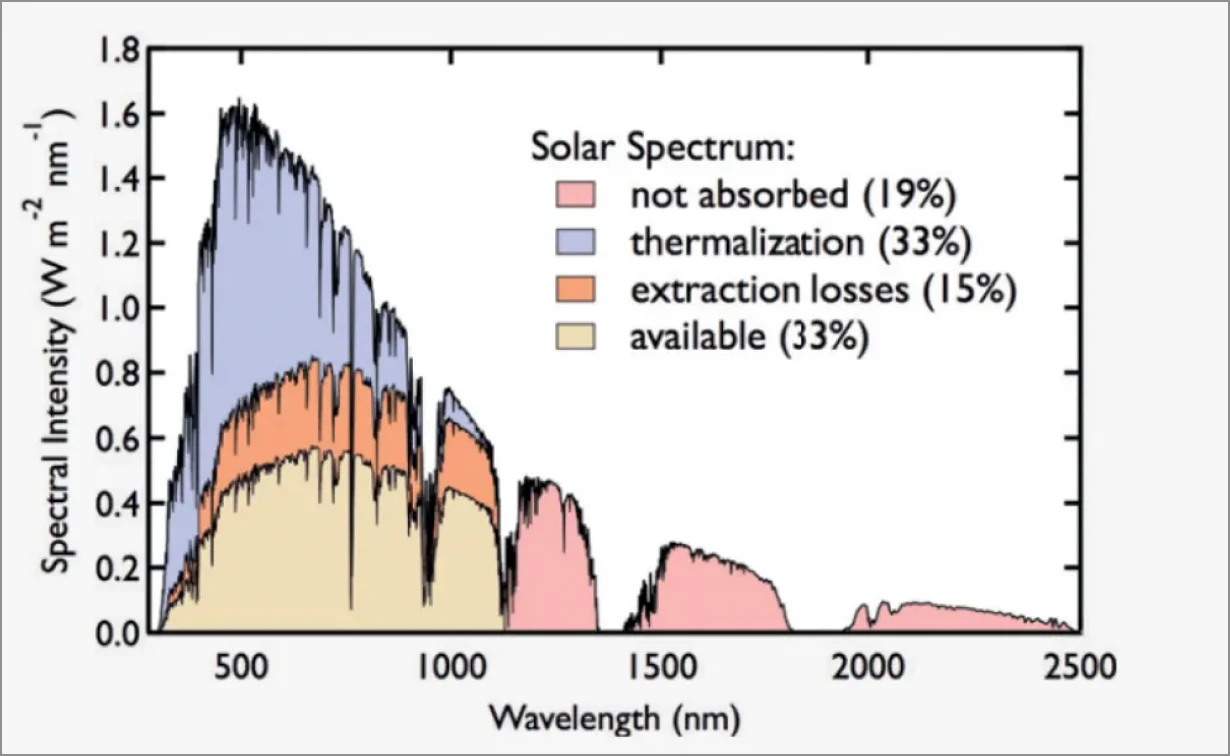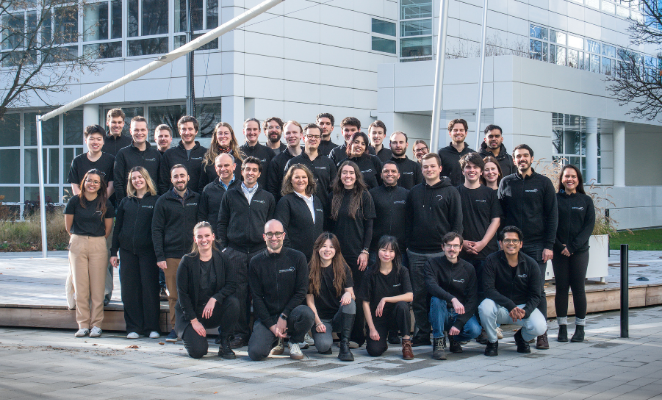In recent years, solar energy has become a prominent renewable energy source, showing impressive growth and potential. This expansion represents more than a passing trend; it signifies a substantial transition towards a sustainable and renewable future.
Solar power has grown by an impressive average of 24% yearly over the last decade (according to the Solar Energy Industry Association). According to the International Energy Agency (IEA) and the Solar Energy Industries Association (SEIA), solar photovoltaic (PV) systems made up more than 4% of the world's electricity generation in 2022 and make them the third-largest source of renewable electricity after hydropower and wind.
As the world works harder to fight climate change, solar energy is becoming increasingly important in achieving the energy industry's goal of reaching Net Zero Emissions by 2050. It is estimated that over 7,000 Terawatt hours of solar energy will be needed by 2030 to meet this ambitious target. This means we need to add around 630 Gigawatt hours of solar PV capacity every year by 2030. Currently, the global capacity sits at only 880 Gigawatt hours.
Strong global policies support this goal. For example, the US Inflation Reduction Act is expected to increase solar energy deployment in the United States by 34% in the next five years. Similarly, China has set a target of generating 18% of its energy from wind and solar.
The main reason solar PV is becoming more popular is because solar panels and cells are getting cheaper. This drop in cost means that solar energy is now more affordable for a wider range of uses and people. In the last 15 years, the price has fallen from 5 to less than 0.5 $ per Watt.

China is the main reason why solar technology costs are going down. They have invested over $50 billion in new solar power, ten times more than Europe. It is also home to the top 10 suppliers of solar manufacturing equipment, inverters, and battery storage. Currently, China is responsible for producing over 80% of global solar panels. Additionally, in 2022, 87% of PV components imported into Germany originated from China.
China dominating all parts of the supply chain (see image below) is good on the one hand because it has pushed down prices through cheap (coal) energy, but on the other hand, it creates enormous dependencies in the long term.

Solar cells are the building blocks of solar panels. They are incredible creations that turn sunlight into electricity. To understand how they work, we need to examine their structure and the laws of physics that govern their operation.

The main parts of a solar cell are electrodes and semiconductor materials. The electrodes, usually made of silver and aluminum, help conduct electricity. The semiconductor material sits between the electrodes, with polycrystalline silicon being the most common, making up about 95% of the market. The choice of materials is important because it affects how well the solar cell works and how much it costs.
Today’s solar panels transform only 20-25% of light into energy.
Solar cells turn sunlight into electricity. This starts when light particles, called photons, hit the silicon material. The electrons in the silicon absorb those photons, giving them extra energy and making them more mobile inside the silicon. By applying a voltage to the electrodes of the solar cell, an electric field is created across the silicon, and the mobile electrons start flowing and form an electric current. The sunlight has been converted to electricity.
Now, to add some quantum physics to the picture, electrons in semiconductors do not absorb continuous amounts of energy but rather specific packages of energy. If the energy of a package is too low, the electron will not absorb it; thus, a minimum of energy is needed. This threshold, called “band gap, “ is a very important material-specific property. In silicon, the band gap is 1.12 electronvolts (eV). That means the electrons in silicon can only absorb light that has at least an energy of 1.12 eV. Light below that threshold will not be absorbed.
The energy of light is directly related to its frequency and, thus, its color. 1.12 eV translates to light with a wavelength of 1100 nanometers (nm) - this is infrared light. Visible light has a higher energy and a wavelength of 380 nm to 780 nm. Note that a smaller wavelength means higher energy. As a consequence, silicon solar cells can absorb some infrared and higher-energy visible light. But they cannot capture all of the light emitted by the sun. The image below shows the solar spectrum as measured on Earth and how much of that light is actually available for silicon solar cells. Light with a wavelength of 1100 nm - 2500 nm has an energy below the band gap threshold and is not absorbed. But too much energy is also not good as this extra energy is not always converted into more electricity, but instead lost as heat (thermalization). In the end, roughly 30% of the light remains to be transformed into electricity. This relates to the theoretical efficiency limit for simple silicon solar cells. The practical limit is even lower, at around 20%.

While this is not a bad number, there is room for improvement. Higher efficiency means more electricity, and people are trying different ways to make silicon solar cells more efficient. But most approaches just yield incremental improvements. Silicon offers many advantages in terms of cost and industrial handling, but it is far from being the best possible solar cell material. If we want to break through the efficiency barrier, we must explore materials beyond silicon.
Finding a better material than silicon for solar panels is critical to making them more efficient than standard cells' current 20% limit. A few options beyond silicon are being looked at:
One material that could replace silicon and become the semiconductor of future solar cells is Perovskite. This material class (there are different Perovskites available) offers several benefits:
Perovskite materials also have a different band gap than silicon. They typically absorb the colors green (around 500 nm) and blue better (around 450 nm), while silicon is better in the red spectrum (up to 800 nm). Interestingly, the band gap of Perovskites can be tuned by changing the chemical composition of the material.
This “band gap flexibility” allows us to create a completely new and very exciting type of solar cell - so-called tandem cells. They share many advantages with Perovskite cells but add some new ones. They use two or more semiconductor materials that are good at absorbing different parts of sunlight due to slightly different band gaps. For example, Si-Perovskite tandem cells combine silicon with perovskite. This allows them to capture a wider range of light, making them more efficient. While optimized Perovskite cells can obtain 25% efficiency, Si-Perovskite tandem cells have already reached an efficiency of 32%. And since silicon is widely used in the solar industry, integrating perovskite layers with silicon cells can leverage existing manufacturing processes and infrastructure.
But it gets even more interesting once we combine different types of Perovskites. As discussed above, we can tune the band gap of Perovskite materials and then mix different Perovskites with different band gaps. This way, we could even achieve efficiencies of up to 50%. A quantum leap compared to current silicon cells.

Several companies are leading the way in making these advanced tandem solar cells:
OxfordPV has set high goals for how efficient these tandem cells can be. The Oxford University spin-off, founded in 2010 and backed by Norwegian energy company Equinor, Chinese wind turbine maker Goldwind, and the European Investment Bank, focuses on the production of Si-Perovskite tandem cells. They hold the world-record efficiency of 26.8% for commercial-sized tandem solar cells and aim for efficiencies beyond 30%. OxfordPV recently set up a production facility in Brandenburg, Germany, that will boost European solar innovation. It says that end users should get their hands on solar panels made from Oxford PV’s cells around the middle of 2024.
CubicPV, based in Massachusetts and Texas, has been developing Si-Perovskite tandem cell modules since 2019. The company aims for an efficiency of more than 30% and is backed by Bill Gates’ Breakthrough Energy Ventures. CEO Frank van Mierlo believes their advantage lies in the company's perovskite chemistry and its low-cost manufacturing method for the silicon layer.
Caelux, a California Institute of Technology spinoff, is trying to add a layer of perovskite to regular silicon cells to increase efficiency by 30% or more. The startup is backed by VC Vinod Khosla and Indian energy, telecom, and retail conglomerate Reliance Industries.
The giant solar cell players, such as First Solar in the US or Meyer Burger in Switzerland, also invest in perovskite.
Swiss panel producer Meyer Burger aims to commercialize 29.6%-efficient perovskite tandem solar cells. They are working with several research institutes in Switzerland and Germany, including the Swiss Center for Electronics and Microtechnology (CSEM), the Helmholtz-Zentrum Berlin (HZB), the Fraunhofer Institute for Solar Energy Systems (Fraunhofer ISE), and the University of Stuttgart in Germany, to reach this goal. Meyer Burger has already achieved a record efficiency of 29.6% for a 25-square-centimeter perovskite tandem solar cell and aims to increase that to above 30%. Its research partner, the Helmholtz-Zentrum Berlin, reached a record-breaking 32.5 % efficiency with tandem cells in the lab.
Founded in 1999, US manufacturer First Solar bought a Swedish PV startup, Evolar, which supports their research in this area. First Solar is the Largest Solar PV Manufacturer in the Western Hemisphere. Unlike most companies that make crystalline silicon solar PVs, First Solar has focused on CdTe solar panels. CdTe can capture more sunlight, making these solar panels more efficient than those made from silicon. First Solar thinks acquiring Evolar will help them become a top player in the next-gen solar cells. They plan to use Evolar's tech to develop tandem cells that combine CdTe and perovskite materials.
All these efforts show how fast and actively this field of solar technology is changing and growing. Perovskite and Tandem solar cells are increasingly recognized as the top contenders to surpass the performance limits of silicon while maintaining low costs. They can potentially revolutionize the solar industry in terms of efficiency and applications and bring solar cell production back to Europe. This would signify a paradigm shift in global solar technology manufacturing.
The establishment of Oxford PV's production plant in Germany demonstrates a solid commitment to advancing solar technology in Europe.
Furthermore, Europe boasts top-notch research institutions and talent in the field of solar energy. The University of Stuttgart has contributed significantly to Perovskite cell research and is recognized as one of the leading universities in this field. It also cooperates with industry giants like the Swiss panel producer Meyer Burger, which aims to commercialize perovskite tandem solar cells with efficiencies of 30% and beyond. ****The presence of such research institutions, coupled with the desire to bring back parts of the solar supply chain to Europe, creates a favorable environment for startups to thrive. While Europe can never be cost-competitive with India or China when it comes to mass-produced silicon cells, next-gen solar cells provide new opportunities. Europe's strength lies in high-tech products with higher margins. Here, access to talent becomes the limiting factor rather than energy and labor costs, and Europe possesses an exceptional talent pool in next-gen solar cell research.
The focus should be on next-generation solar cells in Europe rather than solely attempting to bring back the traditional silicon supply chain. Developing solar cells with higher efficiencies, such as those reaching 35% or more instead of the standard 20%, justifies the economic viability of producing these cells in Germany. This shift towards advanced solar cell technologies aligns with Europe's strengths in high-end research and would position Europe as a leader in sustainable and efficient solar production.











